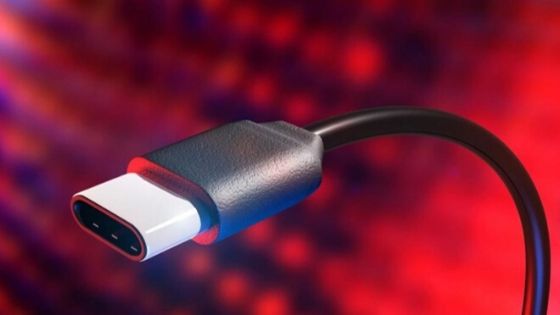A few months after the announcement of the project of the new USB 4.0 peripherals by the USB Implementers Forum (USB-IF), we are going to deepen and discover what are the goodies of these new devices to be informed as much as possible for a possible purchase.
In particular, with the USB 4.0 standard, competition between USB-IF and Intel-Apple is intensifying. In fact, the Intel-Apple duo has been the one to hold the record for speed to date, allowing through the Thunderbolt 3 interface to transfer up to 40 Gbps.

USB 4.0: competition for Thunderbolt
Finally with USB 4.0 the transfer speed of 40 Gbps will be reached, the only sore point is the optional compatibility with the interface designed by Intel and Apple.
In fact, not all cables will be compatible, some will allow to reach 40 Gbps, others may remain at a lower speed. In addition, there will not be a logo or brand that will allow the distinction between compatible and non-compatible cables, to ensure that the purchase is the right one, you will also have to worry about reading the technical specifications of the device.
But be careful: you must also account for the device from which and to which the files are transferred, we cannot expect to reach 40 Gbps going to transfer files to a PC of 2013.
Backward compatibility guaranteed
The reversible USB-C connector is now known to all, it consists of one end with a type C input and another end with the classic “rectangle” connector.
Well USB 4.0 will use this connector making things, fortunately, much simpler for both manufacturers and end users.
It will also ensure backward compatibility with almost all previous standard inputs, including USB 3.2, USB 3.0, USB 2.0 and compatibility with USB 1.0 will no longer be guaranteed.
Even though some USB-C devices already support specific functions for fast charging, all USB 4.0 cables and devices will necessarily have to keep up with these functions.
Definitely a great advantage for users of smartphones, tablets, and any other device that supports fast charging.
Equally distributed power
USB 4.0 will also allow you to connect multiple devices simultaneously to the same port without affecting power, latency or speed.
This means that if, for example, a monitor and an external SSD are connected to the same USB-C port, if the monitor requires 3 Gbps of bandwidth, the rest of the devices will be able to use all the remaining available bandwidth.
When the release date?
Probably May/June 2020, considering that the project was announced in September 2019. There is still nothing certain, we take the rumors with pliers waiting for certain news from USB-IF.